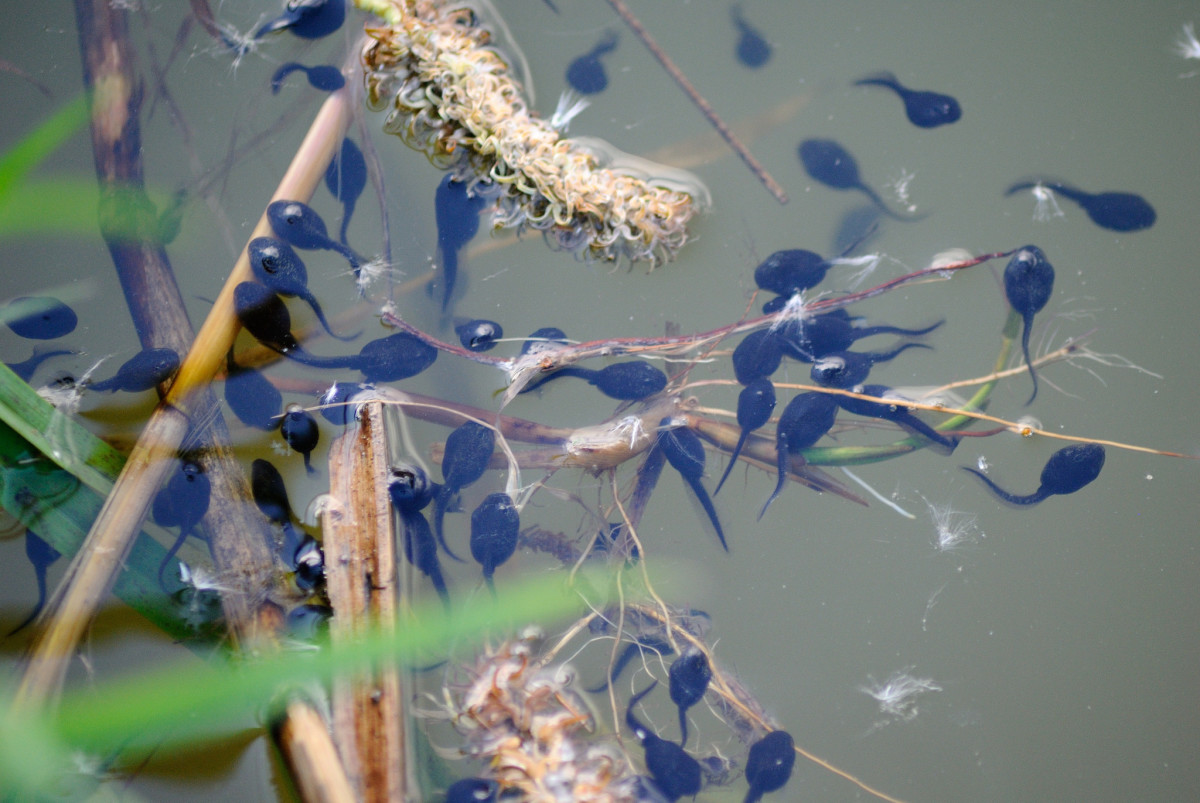Tadpoles are the tiny, aquatic larval stage of frogs and toads. While they may seem harmless, an overpopulation of tadpoles in your pond can lead to overcrowding, water quality issues, and potential damage to your pond ecosystem. If you find yourself with an abundance of tadpoles in your pond and need to control their population, there are several effective and humane methods you can use to get rid of them.
1. Manual Removal:
One of the simplest ways to control tadpole population in your pond is through manual removal. You can use a small net or a fine mesh sieve to scoop up the tadpoles from the water. Be gentle to avoid harming them, and transfer them to a different body of water, such as a nearby stream or lake. Regularly removing tadpoles can help prevent them from overwhelming your pond.
2. Natural Predators:
Introducing natural predators to your pond is another effective method to control tadpole population. Fish like koi, goldfish, and mosquito fish are known to feed on tadpoles. Additionally, aquatic insects such as dragonfly nymphs and diving beetles also prey on tadpoles. By encouraging these natural predators in your pond, you can help keep the tadpole population in check.
3. Adjusting Water Depth:
Tadpoles prefer shallow water where they can easily access sunlight and oxygen. By adjusting the water depth of your pond, you can make it less favorable for tadpole survival. Gradually lowering the water level or adding floating plants to provide shade can help deter tadpoles from breeding in your pond.

Credit: dengarden.com
4. Chemical Control:
If manual removal and natural predators are not effective in managing tadpole population, you may consider using chemical control methods. However, it is important to use these chemicals with caution to avoid harm to other aquatic life and the environment. Consult with a professional or local extension office for guidance on safe and appropriate chemical treatments for tadpole removal.
5. Biological Control:
Biological control methods involve using bacteria or biological agents to target tadpoles specifically. Bacillus thuringiensis israelensis (BTI) is a type of bacteria that is toxic to mosquito larvae, including tadpoles. By introducing BTI into your pond, you can selectively target tadpoles while minimizing harm to other organisms in the ecosystem.
6. Creating Habitat Diversity:
Creating habitat diversity in your pond can help discourage tadpoles from breeding and thriving. Adding rocks, logs, and aquatic plants can provide hiding places for tadpole predators and disrupt tadpole development. By enhancing the biodiversity of your pond, you can create a more balanced ecosystem that naturally regulates tadpole population.
7. Installing a Pond Skimmer:
A pond skimmer is a mechanical device that helps remove debris and organic matter from the surface of the water. Installing a pond skimmer can help control tadpole population by capturing their eggs and larvae before they hatch into tadpoles. Regular maintenance of the pond skimmer can prevent tadpole infestations and promote a healthier pond environment.

Credit: www.youtube.com
8. Using Physical Barriers:
If you are dealing with a specific area in your pond where tadpoles are concentrated, you can use physical barriers to prevent them from spreading to other parts of the pond. Installing a mesh barrier or a pond liner in the affected area can help contain the tadpoles and limit their movement. This method can be particularly useful for targeted tadpole control.
9. Monitoring and Prevention:
Regularly monitoring your pond for signs of tadpole infestation is essential for early detection and prevention. By staying vigilant and taking proactive measures to control tadpole population, you can maintain a healthy and balanced pond ecosystem. Implementing preventive measures such as reducing nutrient inputs and maintaining proper water quality can help discourage tadpole breeding in the first place.
Conclusion:
Managing tadpole population in your pond requires a combination of methods tailored to your specific situation. By utilizing manual removal, natural predators, water depth adjustments, and other control strategies, you can effectively reduce tadpole numbers and maintain a harmonious pond environment. Remember to prioritize humane and environmentally friendly approaches to ensure the long-term health of your pond ecosystem.





